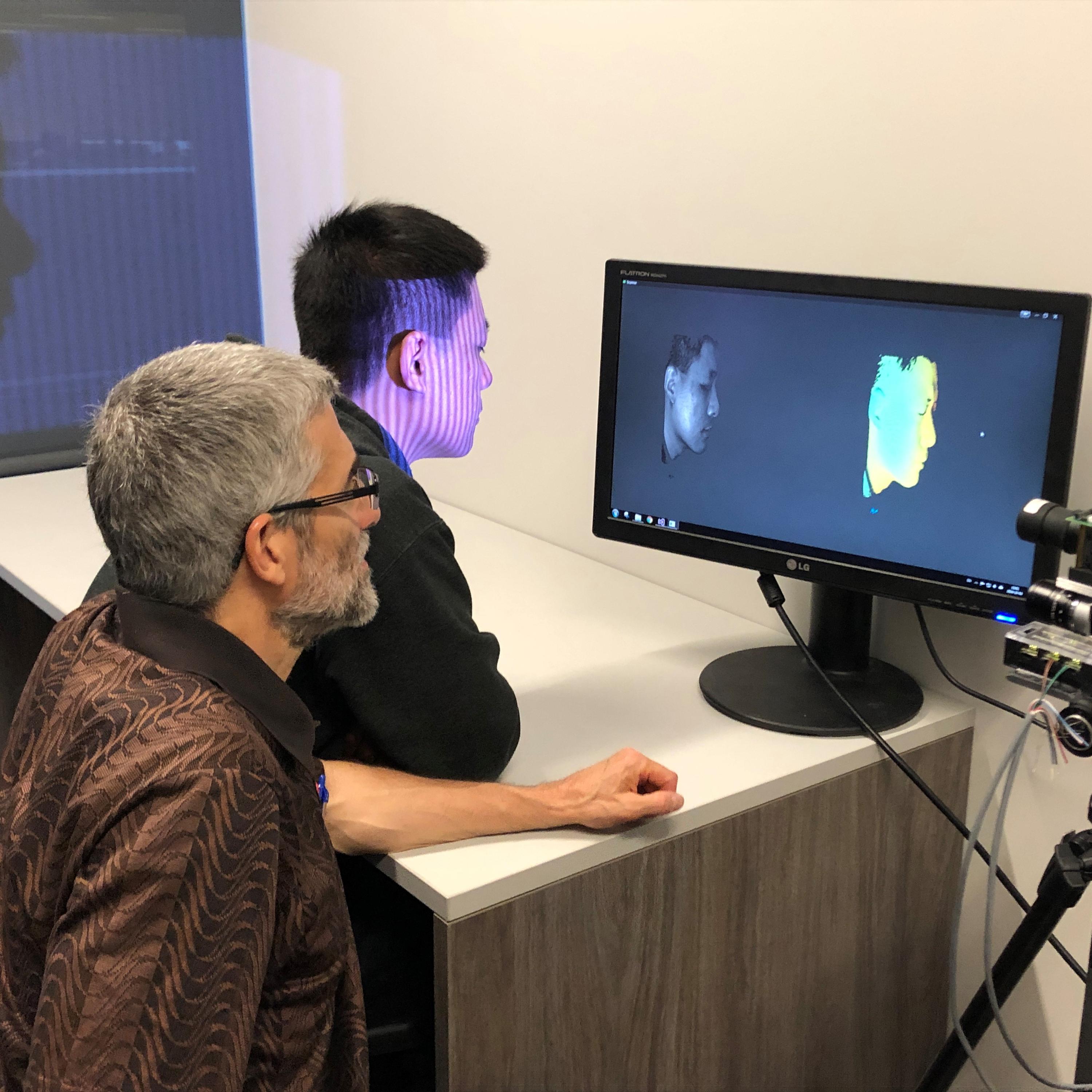Waterloo Engineering researchers have created a 3D scanner that has the potential to improve everything from surgical procedures to our understanding of landslides.
The new technology, created by Jonathan Kofman, a systems design engineering professor and doctoral student Xinran Liu is able to capture full-field

The scanner, described by Kofman as a 3D video camera, can be mounted on a tripod or robot, or be hand-held. Used during surgery, it can take real-time measurements of an organ or tissues that may have shifted or changed shape since images were taken before the operation began.
“If you’re looking at tissues, you can measure their surface coordinates while the shape is changing,” said Kofman, director of the University’s Intelligent Human-Machine Systems and 3D Imaging Laboratories.
New technology, created by Jonathan Kofman, a systems design engineering professor, left, and doctoral student Xinran Liu is able to capture 3D surface-shape data in real-time by enabling 3D capabilities at every camera pixel.
The technology could also improve robotic surgery.
“The surgeon operating a robotic system may now see an overlay of the 3D shape of tissues,” said Kofman. “They can rotate the shape and look at it from different viewpoints.”
Other medical applications of the Waterloo researchers’ 3D scanner include monitoring the progress of treatment of conditions of facial deformity, where muscles on part of the face become weak or paralyzed.